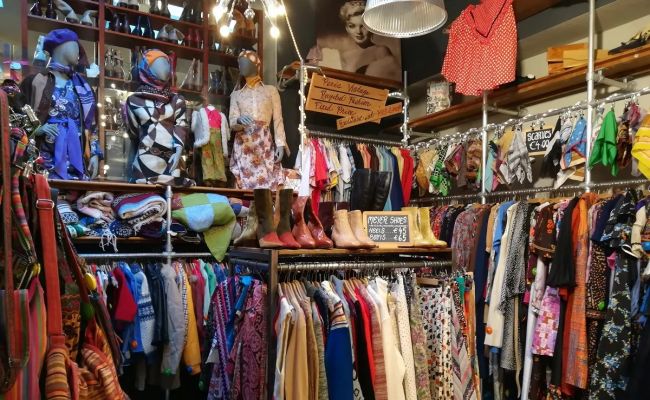- Increasing your budget is a smart way to improve your shopping experience. If only it were that simple.
- Shopping at thrift stores can be a very different experience than shopping at department stores.
- Thrift stores are brimming with bargains, and it’s easy to buy things you don’t need just because they’re cheap.
- It is important to remember as a thrift shopper that thrift store purchases are frequently non-refundable.
- Once you’ve established yourself as a thrifting regular and have discovered certain stores you enjoy, try to establish relationships with the staff by striking up a conversation.
With rising living costs and growing concerns about the state of our environment, people are turning to thrift stores to help their wallets and the environment! People are tired of fast fashion, and it’s becoming increasingly clear that if you’re willing to shop secondhand, you can find high-quality clothing at low prices.
So here are some pointers to help you become a thrift shopping pro in no time.
Table of Contents
1. Make a Strategy
When faced with a seemingly impossible task, the best way to approach it is to make a plan.
It’s a good idea to start thrift shopping by making a list of the items you already own.
This is wise because it will help you stay within your budget and avoid purchasing unnecessary items.
2. Sell Your Own Used Items
Increasing your budget is a smart way to improve your shopping experience. If only it were that simple.
Yes, it is. Be ruthless when it comes to getting rid of items that you haven’t worn in a while and are just taking up space in your home as part of your planning process.
In addition to online portals like Yaga, look into consignment stores, which will not only allow you to sell your used clothes but will also buy them from you.
The best part is that you can go shopping for new treasures while the store clerks inspect and price your existing inventory.
3. Create a Pinterest board
Using Pinterest to create a visual wish list as part of your thrift shopping strategy is a good idea.
This tool allows you to save images of desired items or fashion inspiration for quick reference while shopping.
You can also use your Pinterest boards to help shop assistants locate the items you want.
4. Dress Wisely
Shopping at thrift stores can be a very different experience than shopping at department stores.
Most thrift stores will most likely have limited fitting room space.
Because many thrift stores do not provide refunds, it is not advisable to purchase something without first trying it on.
To address this issue, dress in form-fitting clothing so that your new clothes can be tried on over them – think tank tops and leggings.
Dressing appropriately allows you to try on clothes in the middle of the store without too much difficulty!
5. Stay Comfortable, Pack Lightly, and Know Your Limits
Thrifting is comparable to a sport. To cart throes new finds around without a trolley takes patience, stamina, and a little upper-body strength.
When you start thrifting, you’ll discover that you can easily spend hours combing through mounds of clothing.
As a result, it is best to always dress comfortably. Wear flat shoes and a crossbody bag that won’t weigh you down and will allow you to browse the rails with your hands-free.
6. Use cash to avoid impulse purchases
Thrift stores are brimming with bargains, and it’s easy to buy things you don’t need just because they’re cheap.
It will be difficult, but you must stick to your plan.
Only purchase items that you require, fit well and complement your existing wardrobe.
Carrying a limited amount of cash for your excursion and leaving your credit cards at home is an easy way to stick to a budget.
7. Scan the aisles to save time
It’s not easy rummaging through piles of clothes. It would take an eternity to go through every item in a thrift store.
Finding potential treasures without wasting time or losing faith in the activity is the key to successful thrift shopping.
This is why it is critical to learn how to scan the aisles and identify items that meet your needs, whether it is a color palette or an aesthetic.
8. Keep an eye out for flaw
It is important to remember as a thrift shopper that thrift store purchases are frequently non-refundable.
To avoid disappointment, inspect each item for flaws before parting with your money.
In all the excitement of bargain hunting, it’s easy to overlook a small hole or tear, so take a deep breath and slow down a little!
9. Make Your Pre-Owned Purchase Perfect by Tailoring It
Regardless of price, every item in your wardrobe should fit you perfectly.
Because thrift store finds are frequently one-of-a-kind, they may require minor alterations.
If you have any sewing skills, you could do simple tasks like hemming yourself.

Consider consulting a professional for more advanced tailoring or customization.
Know About:
10. Make Friends With Your Favorite Thrift Stores
Once you’ve established yourself as a thrifting regular and have discovered certain stores you enjoy, try to establish relationships with the staff by striking up a conversation.
These connections will come in handy because these people are well-placed to assist you in shopping and to notify you when new merchandise arrives.
If you’re new to thrift shopping, the prospect of rummaging through racks of clothing may be intimidating.
However, you’ll be relieved to know that the benefits of a thrift haul will quickly outweigh any difficulties you may encounter.
And, if you’re new to the scene, the tips listed above should help you make the most of your next thrift shopping excursion.
So, go ahead and try it… Not only will you be saving money and helping the environment, but you will also have a unique wardrobe and a good story to tell!




